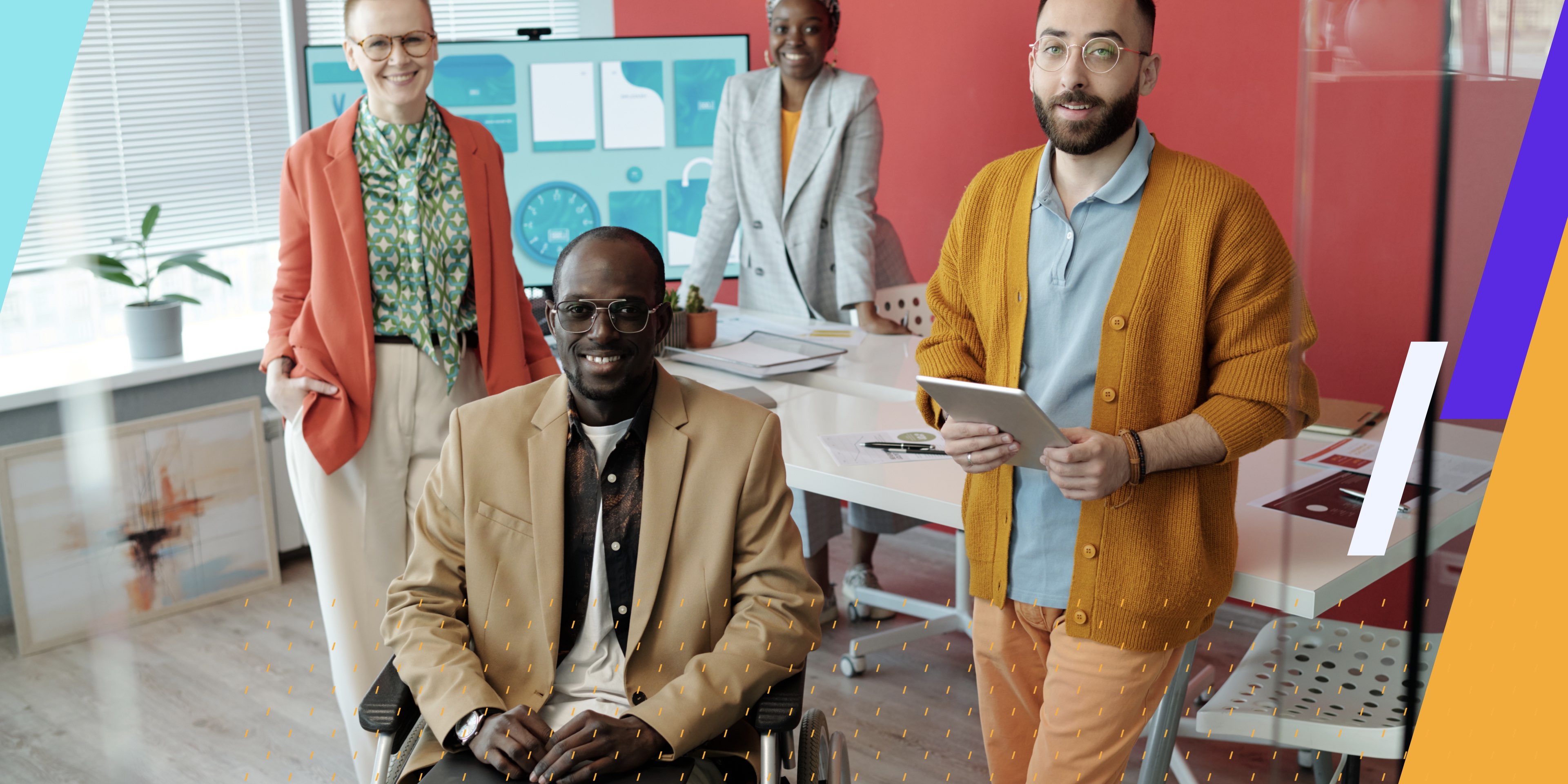In the ever-evolving digital landscape, inclusivity transcends being just a buzzword—it is a shared responsibility. As a Project Support Manager at Allyant, I have had the privilege of working alongside colleagues with disabilities.
This experience has not only deepened my understanding of accessibility but has also challenged and dismantled misconceptions about collaborating in an inclusive environment.
I want to share key insights from this rewarding journey to inspire workplaces to embrace accessibility as an integral part of their operations.
How a Supportive Team Drives Inclusion
A supportive team is the cornerstone of an inclusive workplace. At Allyant, we’ve cultivated a culture that values collaboration, learning, and accommodation.
Accessibility best practices are taught in a way that encourages receptiveness and understanding. Rather than presenting these practices as rigid rules, they’re framed as tools to enhance communication and effectiveness for everyone.
This nurturing approach fosters an atmosphere where colleagues feel empowered to ask questions, share insights, and grow together.
The key takeaway here? A supportive team isn’t just about compliance—it’s about fostering an environment of mutual respect and continuous learning.
Streamlining Accessibility Through Proactive Processes
One major misconception is that accommodating colleagues with disabilities is cumbersome. In reality, when effective processes consider accessibility from the outset, everyday tasks become much easier. For example:
- Accessible Digital Tools: The right digital tools, from screen readers to captioning software, ensure that everyone can participate fully.
- Accessibility Training: Regular training sessions equip team members with the knowledge to utilize these tools effectively and incorporate accessibility into their workflows.
These proactive measures mean workflows don’t require constant adaptation. Accessibility becomes second nature, not an afterthought.
Everyday Tweaks for Fairness and Efficiency
Even with robust processes, daily considerations ensure fairness and seamless collaboration. Key focus areas include:
- Describing Visuals: Visual communication, such as screenshots or GIFs, plays a significant role in many workplaces. However, these visuals can exclude colleagues who rely on assistive technologies. A simple solution? Always accompany visuals with descriptive text. For example,
“Instead of sending a screenshot alone, include a brief caption, such as “This is the dashboard with highlighted sales metrics from Q4.” - Screensharing with Clarity: Screensharing often depends on visual cues. Instead of using vague phrases like “Click here” or “This section,” clearly narrate your actions:
“In the top-right corner of the page, you’ll see a button labeled ‘Submit Report.’ Click on that to proceed.”
This helps ensure that everyone can follow along, regardless of their ability to see the screen. - Considering Color Contrast: In chat platforms, color-coded messages can exclude colleagues with color blindness or low vision. To mitigate this, choose high-contrast color combinations and avoid relying solely on color to convey information. For example, instead of saying, “Items marked in red are urgent,” say: “Items marked in red (and bold text) are urgent.”
- Respecting Communication Preferences: Some colleagues may prefer emails over chat messages because email threads are easier to navigate with assistive technologies. This doesn’t mean abandoning chat; rather, be flexible. If you don’t receive a response via chat, follow up with an email.
- Natural Language Use: Based on my experience and the feedback I’ve received, phrases such as “See you later” or “I heard about that” are natural expressions and not offensive to colleagues who are blind or deaf. Trying to avoid them often feels more awkward than inclusive. Emphasize respectful communication and address specific needs.
Building an Accessible Workplace
While technical tools and processes are crucial, attitude plays an equally important role. Guiding principles for fostering an accessible workplace include:
- Be Respectful: Treat accessibility not as an obligation but as a way to ensure everyone can contribute their best work.
- Stay Open to Learning: Accessibility is a dynamic field. Listen to feedback from colleagues with disabilities and incorporate their insights into your practices.
- Understand Accessibility is an ongoing effort: Achieving complete compliance with accessibility standards may be impossible. Focus on consistent improvement and prioritize changes that have the greatest impact.
The Reward of Inclusivity
Working with colleagues with disabilities has enriched my professional journey in countless ways. It has taught me to approach challenges with creativity, communicate more effectively, and appreciate diverse perspectives.
Beyond the practical skills, it has reinforced a simple yet profound truth: Inclusivity benefits everyone.
By fostering a culture of support, leveraging robust processes, and making thoughtful adjustments, we can create workplaces where all team members—regardless of ability—feel valued and empowered. And isn’t that what true collaboration is all about?

